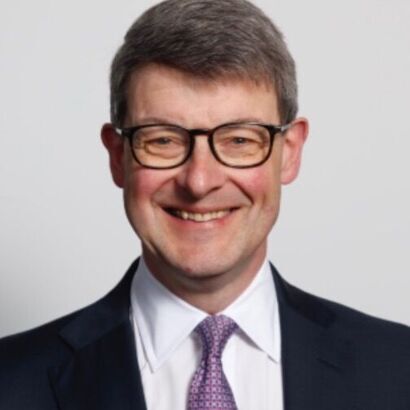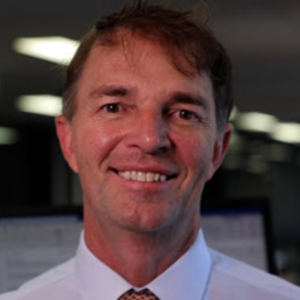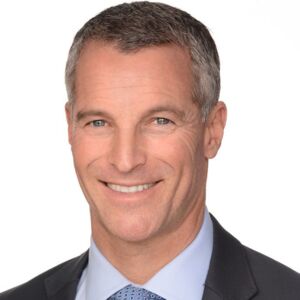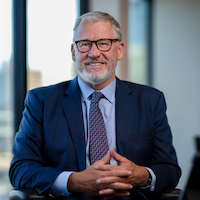TCorp joins the top 100 asset owners club
By Elizabeth Fry

The prospect of building strong relationships with the top global sovereign wealth funds, managing $113 billion of assets, and the freedom to design a rational client-aligned investment strategy is why Stewart Brentnall wanted the job as TCorp's inaugural investment chief.
Five years ago, the newly created role called for him to combine the investment management activities of three organisations - TCorp, State Super, and iCare to create a new structure. Shortly after, the NSW Generations Debt Fund was created - a sovereign wealth fund.
"It was a unique and incredibly attractive opportunity," he says.
So too, is managing large amounts of assets.
"Anything north of $100 billion affords funds a certain flexibility of management style as well as access to deals and partners that you just don't get with less than that," he adds.
The world's sovereign wealth funds worth trillions of dollars of combined assets are looking to share opportunities and have co-invested with TCorp in big infrastructure and property investments on many occasions.
Global sovereign wealth funds operate as a club often sharing experiences through conversations of comparison, collaborative activities, and co-investment.
"We are all willing to share our journeys, and that's one of the things which makes the job so interesting. Each of these organisations has its own bailiwick, so we don't compete with each other."
According to Brentnall, what's great about working for a sovereign fund is being able to pick up the phone and talk to his counterparts.
"Some of the most intelligent and experienced asset managers work for our sovereign peers globally; the conversations are always deep and insightful."
As he sees it, this is one reason why analysts or portfolio managers should consider working for a sovereign asset owner if they're looking to change jobs.
"You can't put a price on intellectual stimulation," he says, adding that sovereigns can invest without being forced to worry about peer risk or strong profit motives, allowing them to be driven only by client needs and sensitivities,"
Pathway to mediocrity
Peer risk is a common theme in funds management. Many superannuation funds worry that the prudential regulator's push to weed out underperforming funds will exacerbate the risk of herding when it comes to asset allocation.
APRA's new tools - the heat map and the performance test for MySuper products under the federal government's Your Future, Your Super reforms - could result in funds becoming overly peer sensitive because they won't want to risk becoming an outlier in the industry.
But with strong client alignment and permission to focus only on their mandate and ignore peers, TCorp has a major advantage.
The NSW State Government's investment arm is not regulated by the prudential regulator even though it complies to a large extent with the regulator's playbook.
TCorp's purpose is very clear - to provide a benefit to the people of NSW, Brentnall explains.
"Importantly, we are allowed to do so as a sovereign fund with a very defined operating patch. We work in close alignment with clients and therefore not behoven to do what peers do," he explains.
"If we have to start thinking about what our peers are doing, you can liken that to the English hunt where you can do an absolutely excellent job of following the tail of the dog in front of you without having any idea where the pack is going.
"Peer risk is fine if one is aware of it. But it has a downside if you feel that you must build an investment strategy around it."
Brentnall argues that APRA's benchmarks have no relevance to TCorp's clients' needs and objectives. Most of these relate to paying out pensions and insurance claims.
"My job is to understand the client needs and risk sensitivities and build a very aligned investment strategy that will deliver the best outcome for those needs," he adds.
That means building a very bespoke investment strategy to meet the needs of some unusually shaped liabilities.
"The shape of that strategy could be very different to others in the market so lumping TCorp in with everyone else in terms of meeting APRA's benchmarks is probably not appropriate."
The joined-up model
The TCorp investment chief is four years into implementing a risk-based total portfolio approach to investing. It has delivered strong cumulative returns of $38 billion and cost savings of more than $94 million.
Essentially, the total portfolio approach (TPA) is a joined-up investment process that brings together top-down macro views and bottom-up sector opportunities to construct the overall portfolio.
Funds do not operate with a fixed strategic asset allocation and they avoid silos across asset classes. The whole focus is on achieving the fund's investment goal rather than on a particular strategic asset allocation.
To Brentnall, TPA is the model of optimality and alignment.
Conversely, he goes on to say, strategic asset allocation (SAA) is the model of convenience and measurability.
"People are very comfortable with an SAA model because they can measure all the different parts of the portfolio. However, the question is to what end and to what relevance?
"In a TPA sense, we are always trying through different mechanisms and people to deliver that one client objective."
The investment chief points out that If client alignment is clear and there is only one objective, then surely the investment process should be joined up and linked to the aim of having the best possible portfolio to deliver that objective.
"Therein lies the mindset of total portfolio thinking. It eliminates distractions."
"Success or failure is binary," he warns. "The investment strategies either meet that objective or they don't."
His main argument against an SAA approach is that it is set annually.
Moreover, capital is divided into different asset classes. The capital then stays in that bucket for the rest of the year. If a portfolio manager wants to buy an asset, they have to sell something.
With TPA, you have real-time competition for capital. Anyone can propose an opportunity that they think will improve the risk-adjusted outcome for the client. And technically, that can be funded from anywhere in the portfolio.
"TPA is part of our process, but equally, it is a cultural mindset," says Brentnall. "The team shares decisions made for the whole fund and accountability for the outcome."
Not surprisingly, few funds have adopted TPA. The joined-up model is hard work.
Brentnall claims the difficulty is the cultural aspects of that model and collegiate ownership. "Sometimes, we must make investment decisions for the fund that do not suit individuals which is hard for people to accept," he states.
"We're human, and we are wired to want autonomy and individual accountability."
From where Brentnall sits, joining a sovereign fund is a great career move for someone with a culturally collegiate mindset.



